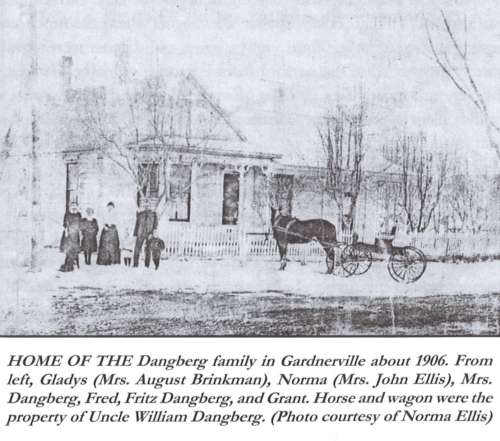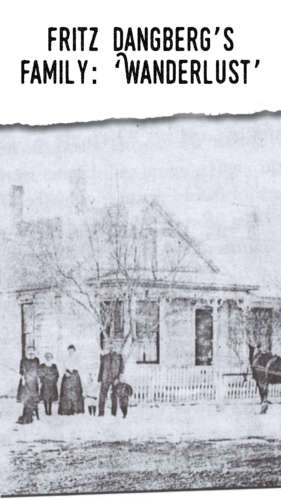Frieda’s Files are a collection of historical short stories about Carson Valley by Frieda Cordes Godecke, published in The Record-Courier. Reproduced here with permission from the Cordes Cousins, and their book “Frieda’s Files”.
December 15, 1977: Fritz Dangberg’s Family: ‘wanderlust’
“Wanderlust!” Who is there among us who can say that we didn’t at one time or another have the urge to throw a few belongings into a bag and set out to see what the world was like? It was the same yesterday as it is today.
Perhaps Carson Valley saw its greatest influx of young aliens from Europe during the last several decades of the 19th century and the early decades of the present one. Tales from America had it that there were endless opportunities for young people if they were willing to work to accomplish their ambition. They left family and friends knowing full well that they might never again set foot on their native soil.
One such ambitious young man was Fritz Dangberg, who left his native Westphalia, Germany, to come to Carson Valley in 1895. He had four uncles – Chris, William, August, and H. F. Dangberg, residing here, and it was with Chris Dangberg that he made his home. Uncle Chris was also responsible in helping Fritz earn his first American dollar. In the Dangberg home he soon learned the English language from his cousins who were near his own age.
Fritz’s first steady employment was with the Douglas County Creamery at Waterloo. It was his duty to haul the famous butter manufactured at that plant and packed there into wooden crates, which were used and reused, to Carson City. From there it was shipped by rail to Virginia City and markets in San Francisco. On these trips to Carson City he stabled his horses at the Anderson Hay Yards and became a friend of the Andersen family. Through this friendship he met the young lady who later was to become his wife.
Meta Winkelman came to Carson City from Germany in 1896 to make her home with her sister whose husband Zirn Andersen owned the Andersen Hay Yards. Meta soon found employment at the Orphan’s Home in Carson City and later worked as a house servant for the Sam Platt family. She and Fritz Dangberg were married in 1897 and came to Gardnerville to make their home.

Fritz Dangberg’s Gardnerville home still stands
They purchased the house shown in the photograph from Dr. Franklin, and with it went about two-and-a-half acres of ground on which were also various sheds and a large barn. The total price was $2,000. Mr. Dangberg was criticized by his neighbors for having paid far too much for the property.
Fritz Dangberg was now ready to start business on his own. He purchased a large covered freight wagon, a flat bed, and ten strong horses. The big barn provided ample room for four double and two single stalls, oat boxes, harness pegs, and space for hay and grain. A faithful teamster, Jim Murphy, was his right hand in driving and caring for the horses and in loading and unloading butter, fruits, vegetables, and other supplies needed in Carson City and Gardnerville. Red tassels dangling from the foreheads of the leaders of the team made it easy to recognize the Dangberg team among many at the Hay Yards. There was also the familiar jockey box on the wagon where the lunch and fresh water were kept. The freight wagon and drivers were always warmly greeted upon their return from Carson City by the Dangberg children and most of all by little Norma (Mrs. John Ellis). She was fondly called “Nudgeon” by teamster Jim Murphy. She looked forward each evening to munching on the sandwich that was purposefully left there by her teamster friend.
While her husband was on the road, it was Mrs. Dangberg who kept the home fires burning by caring for the house, the children, and the livestock. She cleaned the chicken roosts and stalls and fed the chickens, the cow, and the calf. It was her duty to milk the cow morning and evening, to gather the eggs, and to churn the butter. She kept the large wooden trough filled with water for the cow and calf and for the dusty and tired horses upon their return from Carson City. This was done with a hand pump.
The Dangberg’s four children – Gladys (Mrs. August Brinkman,) Norma, Fred, and Grant were born in Gardnerville.
When the V & T whistled its way into Minden in 1906 and took over much of the freighting business, Fritz Dangberg was forced to turn to another source of income. He took over the Valhalla Saloon which was located in Gardnerville next to the hall by the same name. As a sideline, he cut ice on the Carson River. Those years, it seemed, winters were more severe, and consequently ice seemed to be thicker. When it had reached a thickness of at least twelve inches, ice saws were used to cut large blocks. These were placed on a flat bed and hauled to the ice house which was conveniently located near what is now the J.T. Restaurant in Gardnerville. The ice took care of his own needs, and it was sold to other saloons in the Valley as well.
In 1908, he took over the Heidelberg Saloon in Minden in what is now known as the Annex. The saloon was located on the lower floor, and ten rooms on the second floor were for rent. Business was good, and by thrift and hard work, Mr. Dangberg found it possible in 1910 to erect the attractive brick building in Minden that is now known as the Pony Express*. The new Heidelberg Saloon was fashioned after a German tavern with keg beer and beer in quart bottles available at all times. The saloon was conveniently located across the street from the Minden depot, and was a meeting place for his friends as well as a gathering place for visitors and business men coming to the Valley on the V & T.
The sheds and barn on the Dangberg property have been replaced by dwellings, but the house still stands intact and in good repair. For many years it served as the Catholic rectory, but it is now again a family residence. The comfortable old porch is closed in and some of the gingerbread is no more.
There were so many exciting things to hear and see from that front porch! Runaways, accompanied by barking dogs and shouts of men concerned about the welfare of the people involved, were frequent. Then, too, it was always possible that a runaway horse might crash into the picket fence or the hitching pole out front. Occasionally there was a fire in the neighborhood, and it was interesting to hear the bells ring and to watch the old hand cart and volunteers on their way to the fire. Cattle being driven to Sam Imelli’s slaughter house sometimes ran amok when they were frightened by barking dogs and explored the area before they were brought under control.
All these things bring back fond memories not only to the Fritz Dangberg family, but to those of us who like to dream a bit, too.
The Carson Valley Walking/Driving map is a self-guided tour of historic and recreational points of interest around Carson Valley. Fritz’s house still stands at 1456 US Hwy 395 N. although it’s not open to the public. Download the map or pick one up in visitors center inside the Carson Valley Museum and Cultural Center.
*The Pony Express building is now home to Francisco’s Mexican Restaurant.




